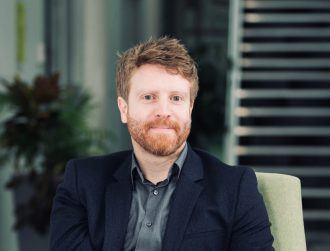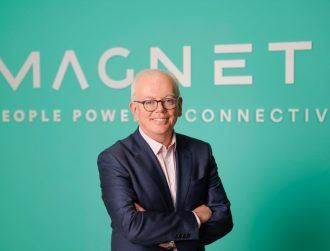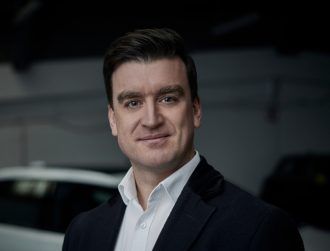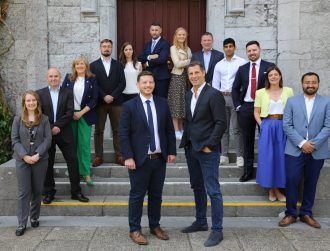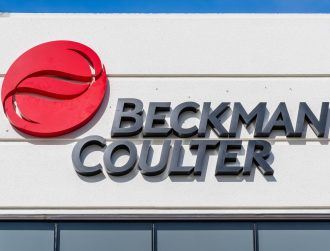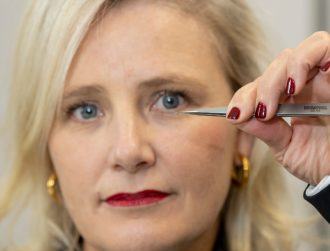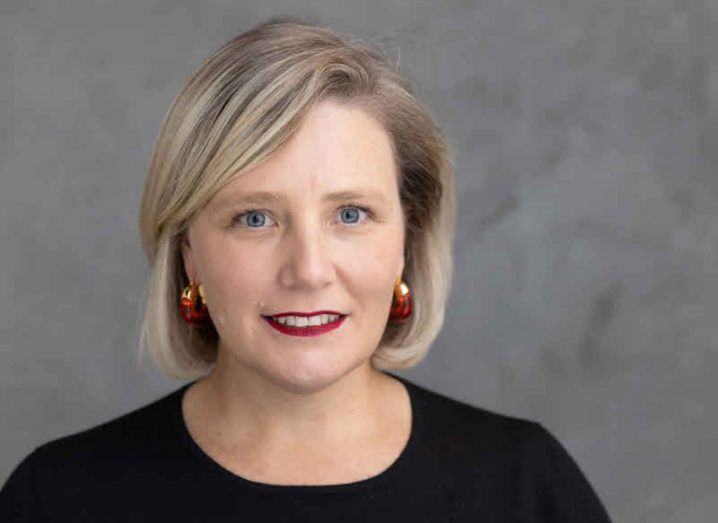
Chloe Brown, Ceroflo. Image: Juan Patino Photography
Ceroflo’s Chloe Brown talks to SiliconRepublic.com about her role as CEO and the several challenges currently facing medtech companies in the EU.
Chloe Brown is the CEO of medical device firm Ceroflo. Brown has an extensive background as a sales and marketing executive with more than 20 years of experience, mostly dedicated to neuro-intervention and vascular devices.
Prior to her current role at Ceroflo, she developed the ischemic stroke referral and clinical programmes in Europe, Asia and Latin America for Covidien (now Medtronic) before joining Neuravi to successfully lead the commercial team in Europe.
Describing her current position at Ceroflo, Brown said: “My role as the CEO is to oversee the development of Ceroflo’s strategy, manage the tactical execution of that strategy, carefully control the burn-rate of the company and engage the investment community in raising funds to support the development of Ceroflo’s novel technology.”
‘I believe that compassion and direction can be given together to create an important bond and drive productivity’
– CHLOE BROWN
What are the biggest challenges facing your sector and how are you tackling them?
There are several challenges facing EU medtech companies at present including the regulatory burden associated with the new EU Medical Device Regulations and the uncertainty around approval timeframes.
The investment market is also tighter, and costs are increasing across the board. Materials shortages are also creating delays in production, and this further increases the cost of bringing a novel technology to market.
Cereflo’s strategy to tackle these challenges includes an initial focus on the US market and the Chinese market, especially as intracranial atherosclerotic disease (ICAD) is a disease that affects their populations in greater proportion than is the case in Europe. We are taking a ‘wait and watch’ approach to the EU.
Ceroflo is also targeting investment from experienced strategic investors who understand strokes and understand the development of innovative technologies to treat untreated diseases.
Our CTO is highly experienced in developing novel stents and has relationships with many suppliers. Our strategy is to minimise the number of parts and materials required to develop the technology.
What are the key sector opportunities you’re capitalising on?
The key sector opportunities we are capitalising on include the exponential growth in the treatment of acute ischemic stroke. This growth was born from the success of stent-retrievers and advanced aspiration catheters for endovascular mechanical thrombectomy. The success of this treatment has led to an impressive growth in the field of neuro-intervention and the development of pathways allowing stroke patients to quickly reach an endovascular treatment centre. This growth is similar to that seen in the ’90s for the treatment of heart attacks.
ICAD is the leading cause of stroke and is seen as the next frontier in the treatment and prevention of stroke. Therefore, centres treating strokes represent a key opportunity that we will be able to capitalise on with our technology.
What set you on the road to where you are now?
In 2004 in Sydney, Australia, I saw my first endovascular stroke treatment of a ruptured intracranial aneurysm. Dr Ken Faulder was performing the procedure on a 52-year-old woman, the age of my own mother at the time. Intracranial aneurysms were known in my family, and at that moment, the feeling of human fragility struck me like never before.
The intricate treatment of this aneurysm was so elegant, I knew I was destined to continue to work with devices and technology to treat patients with stroke. I have been working with the neuro-interventional community ever since, developing a broad network of relationships and a deep understanding of the space.
What’s the biggest risk you’ve ever taken?
Following the sale of Neuravi to Johnson & Johnson, I decided to step out on my own and develop a strategic marketing consulting business. This was a daunting idea. Having no contracts lined up, I had to trust in my network and that I would find people who needed my expertise and skills to help them build their strategy and business.
What one work skill do you wish you had?
Even as a leader, I am constantly learning how to improve upon the skills I have learned throughout my career. I work with a career coach who helps me to reflect on my actions and skills and work to improve on them. Skills such as negotiation, critical thinking, adaptability and expectation management are consistently themes I like to build upon.
As a CEO, time management is always a challenge, so I actively seek technology to improve productivity and communication with my colleagues.
How do you get the best out of your team?
I am very supportive of my team both professionally and personally. I believe that compassion and direction can be given together to create an important bond and drive productivity. I like to challenge my team but I also lead by example, showing them the importance of hard work, focus and continual learning.
I am very passionate about developing talent and supporting them to reach their true potential. I maintain communication with all my teams past and present.
Have you noticed a diversity problem in your sector?
Neuro-intervention has been a male-dominated specialty in medicine since its inception. However, it is nice to see an influx of female physicians joining the specialty in recent years. From an industry perspective, there is an increasing number of females in senior positions but there is a dearth of females in C-level positions within the neurovascular sector. In fact, I think I might be the only female CEO leading a neurovascular company.
What’s the best piece of career advice you have ever received?
Hire smart people into your team who are capable, ambitious and who you could see taking on your role in the future.
And… never assume anything!
What books have you read that you would recommend?
Zero to One by Peter Thiel, Atomic Habits by James Clear and Never Split the Difference by Christopher Voss.
What are the essential tools and resources that get you through the working week?
My Macbook Pro (I am Apple all the way), my iPhone 13 Pro and my Leuchtturm leatherbound notebooks – I have different colours for different activities. I like to write copious amounts of notes – I rarely reflect on them, but writing helps me process thoughts as memories.
What also gets me through the week are my reading glasses, coffee and my family.
10 things you need to know direct to your inbox every weekday. Sign up for the Daily Brief, Silicon Republic’s digest of essential sci-tech news.

